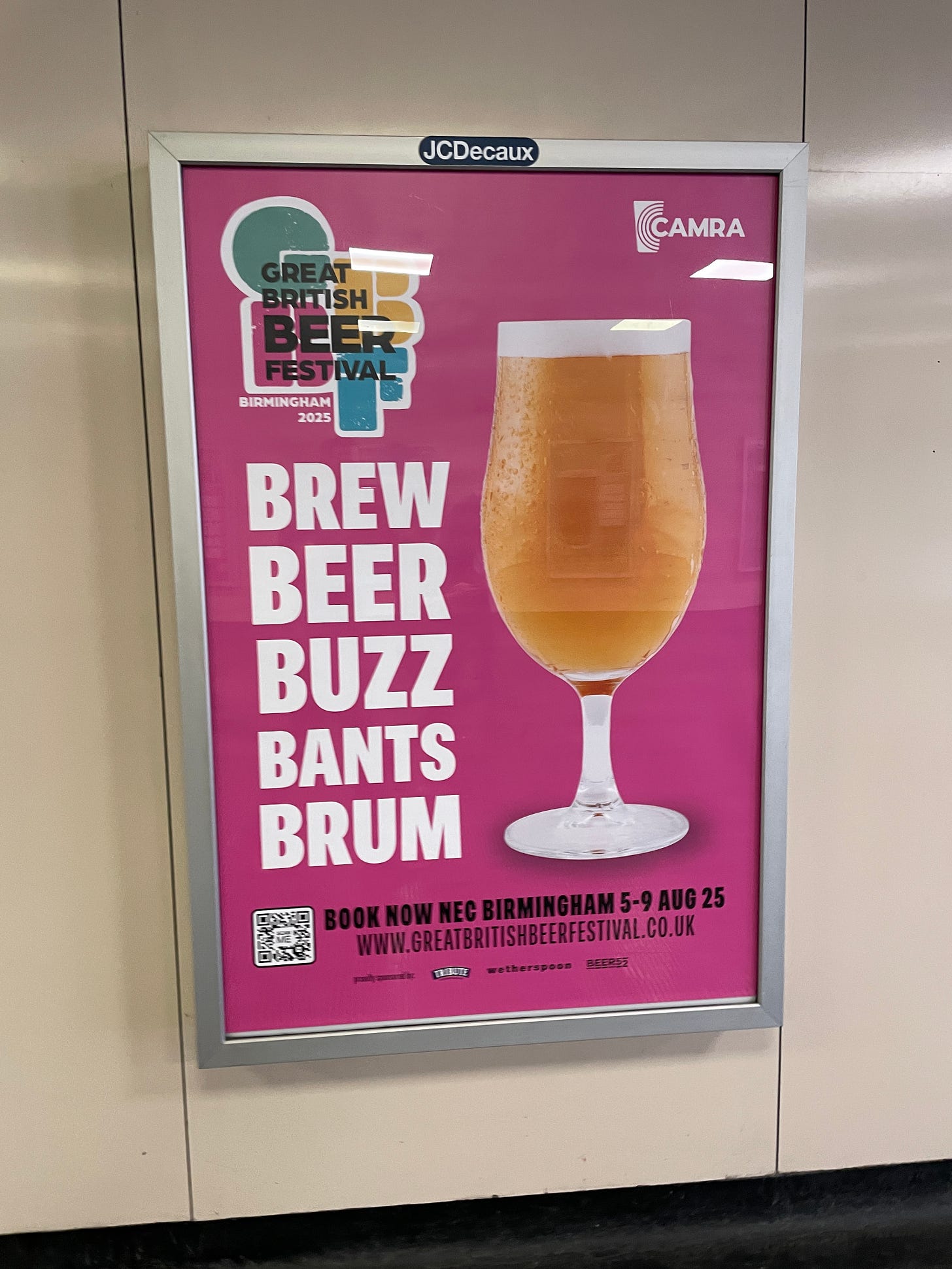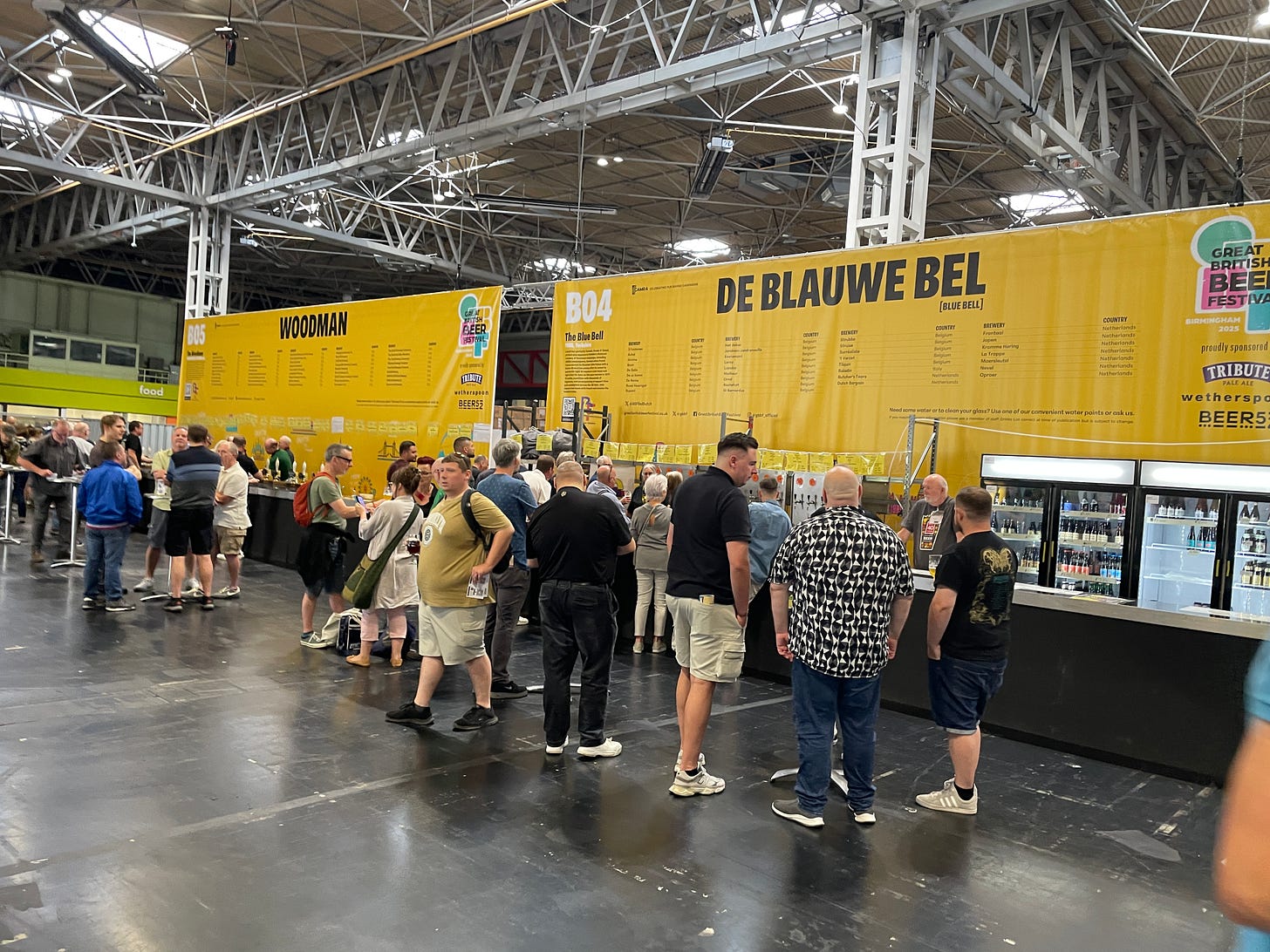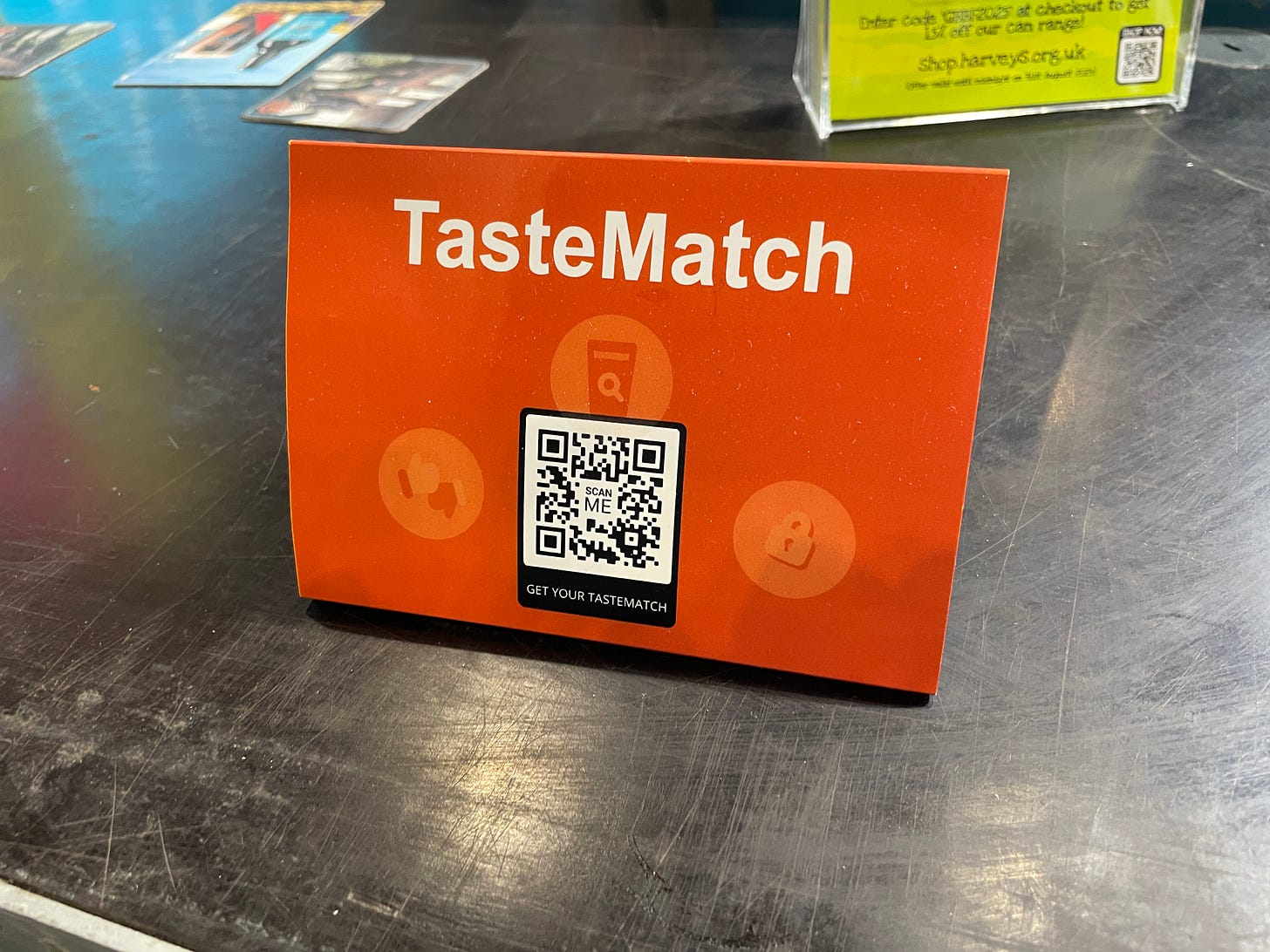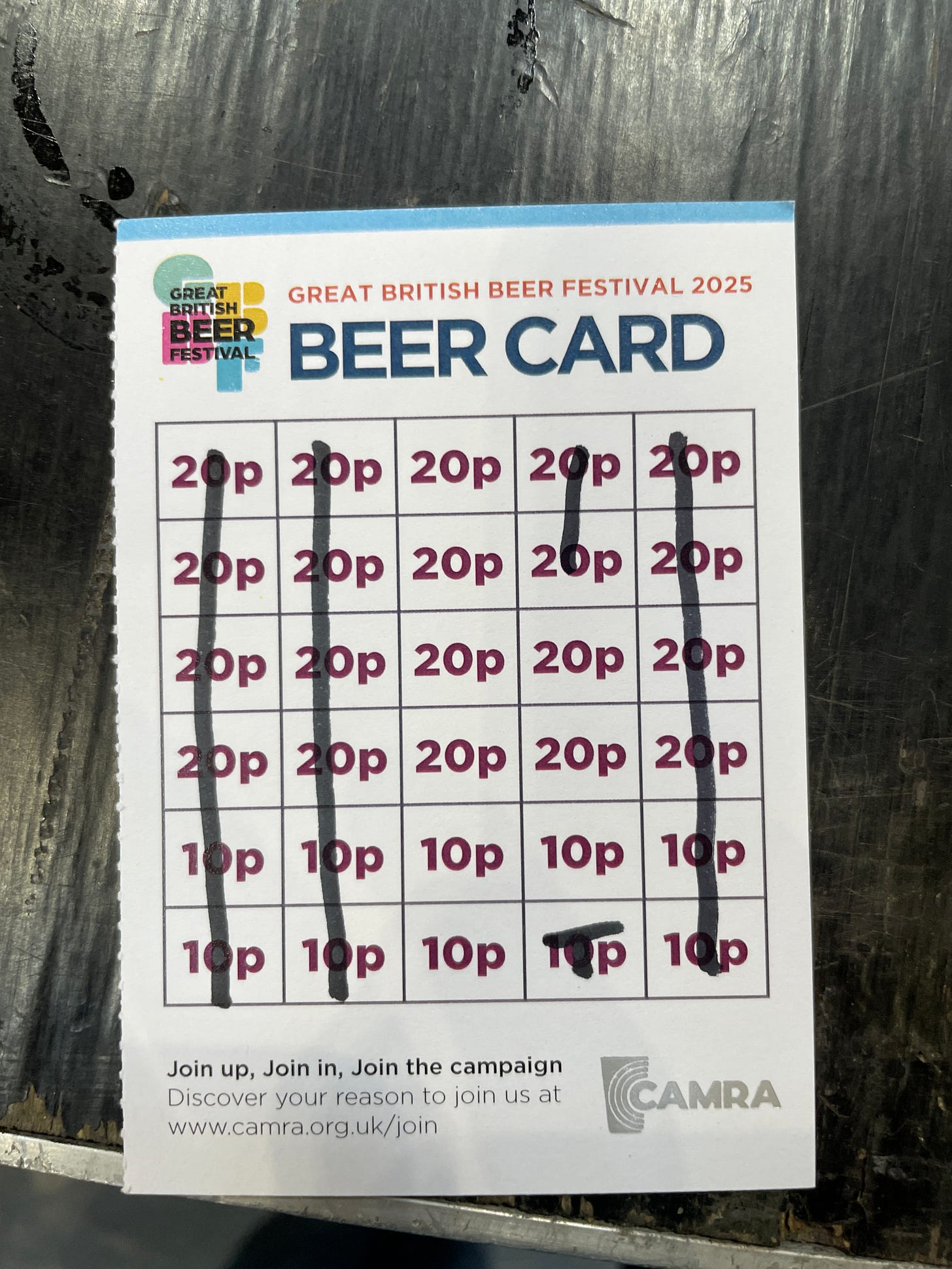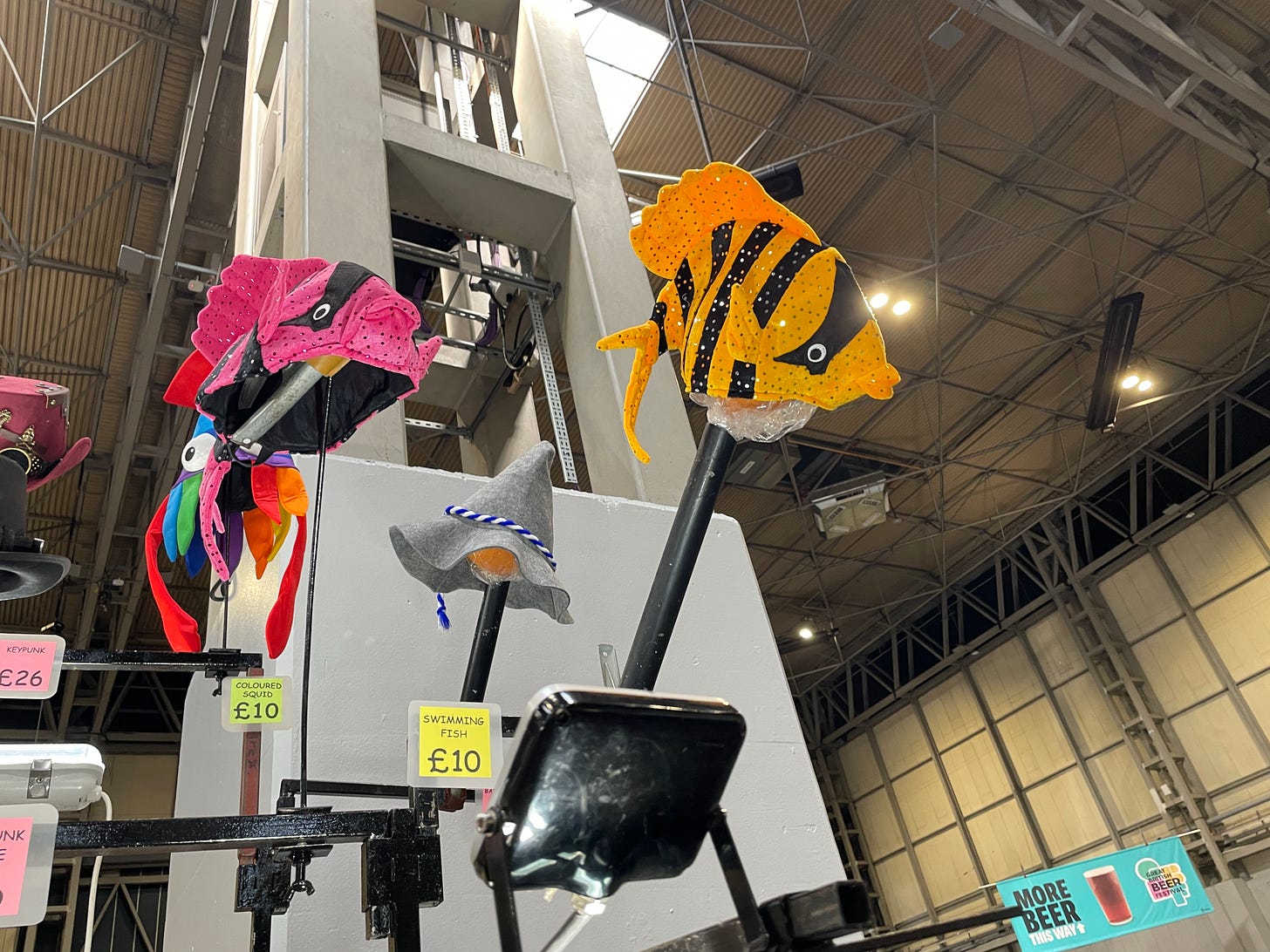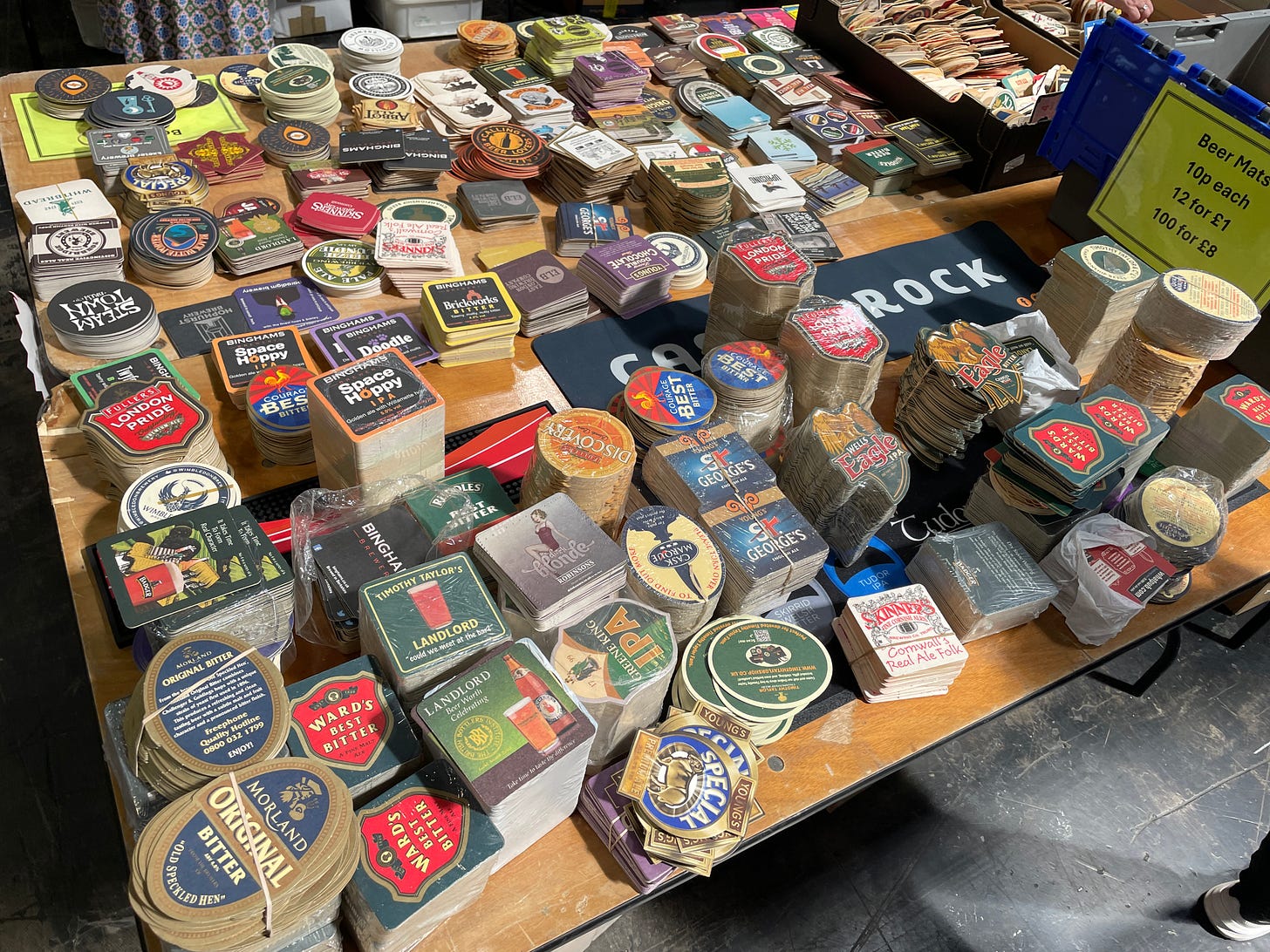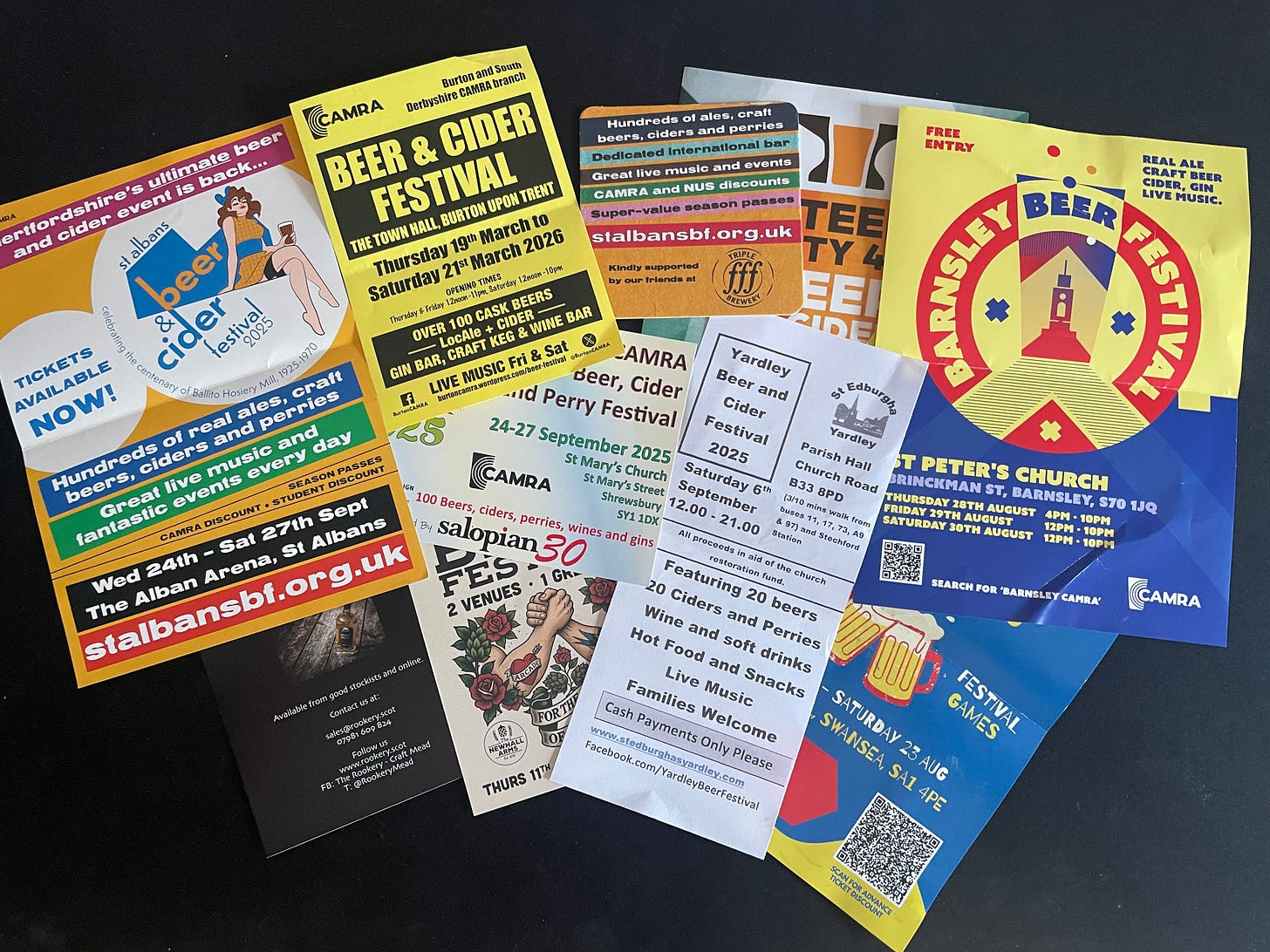What I learned about design from England's biggest beer festival
Similar types fandoms meet at the same venue.
CW: references to alcohol.
The Great British Beer Festival is the biggest festival of its kind on England, and the moment it was announced that it was coming to Birmingham…? Let’s just say we bought our tickets early. Were it held elsewhere we might not have bothered, but a relatively short train ride away? Let’s go!
Yep, it’s at the NEC (the same venue as the UK Games Expo), and of course it’s well-signed.
A quick note: my goal with this post is to highlight some design elements I appreciated that might be relevant to board game design. Beer tasting notes are a different blog I’m not currently keeping, but suffice it to say they were all excellent.
Since your average attendee will by definition not be sober (for long), I appreciated the signage: bright colors, simple high-contrast, and thick fonts. The beers that were actually available were shown on smaller signs by the casks themselves, so the top list was a way of showing their offerings across the 5-day event. These would have been very difficult to update on the fly, so you learned to scan the smaller signs to know what was actually available in the moment.
The lesson: colors, fonts, and contrast all work hand-in-hand to make a thing easy to parse.
A genuinely useful service - give your opinion on more common beers to get recommendations on some new ones to try. The QR code ‘knows’ you’re at the fair, probably thanks to some URL parameters encoded in the QR code. As such, it’s naturally biased towards the beers available at the event.
The lesson: So long as you’ve set it up in your website analytics (or your QR code generator backend), this was a great reminder that it’s relatively easy to track different ways or places where users are coming from.
At more than a few events like this (looking at you, Gin and Rum Festival), one purchases tokens and then exchanges them for your drink of choice. Since the beers were all over the place as prices go (and were available in 1/3 pint, 1/2 pint, and full pint sizes, I was curious to see how they handled this.
Their solution: purchase as many ‘beer cards’ as you like for £5 each as you enter. The value is broken down into 10 pence and 20 pence boxes (£1 in each column) and crossed out as they’re spent. On this particular card, I have £1.50 left. (You could refund any unused value before leaving.)
While it worked, this was actually the weakest part of the event’s design for me, for three reasons:
I only saw these being sold in one place (near the entrance of hall 2, the smaller of the two halls being used). If you came with cash only (somewhat rare here in the UK), this was your only way to pay.
Every brewery had plenty of card machines handy.
I didn’t observe how it was accounted for (in other words, I didn’t notice how a brewery would track what they were selling so as to claim that money back from the fair). Maybe they were tracking things on a clipboard behind the bar - since it wasn’t my job to design their system for them, I didn’t worry about it too much. If anyone knows how it worked, however, I’d love to hear in the comments.
The lesson: make it easy for people to pay. POS card machines are everywhere these days.
While the beer was the headline feature, a couple of food offerings and other exhibitors were around. These fish hats were just a couple amongst the dozens on display well above the heads, conveniently easy to see and point to while not allowing people to handle the stock. Impulse purchases FTW!
The lesson: people come to an event like this with money and ready to purchase what catches their eye. Being the only one selling what you have to offer makes it a lot easier to stand out.
Speaking of stores, a partitioned-off area had a bit of everything, from beer mats to drinking glasses to charity-shop-quality shirts from various events in the past. I didn’t see a lot of purchases happening in the 20 minutes we perused, but it was a pleasant enough place to meander with a beer in hand.
The lesson: nostalgia is powerful. Sometimes people buy something just because it’s cheap and reminds them of a fun / better time.
More than a few other festivals of a similar type are happening across the country. I was surprised to see such a… variety… of quality of flyers.
The lesson: the best place to sell a future event is at a current, similar event… and you may not always need a super-slick design to do the job.
Overall?
As I’ve recently gotten into organizing an event, I’ve come to appreciate just how many moving parts an event of any size requires. I’ve definitely been keeping my eyes open to observe how things get done, the companies and services involved in keeping attendees happy, and so on.


